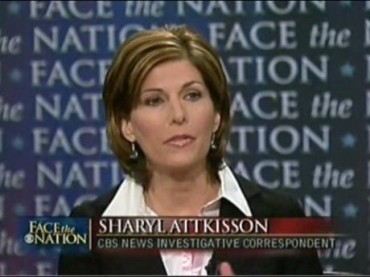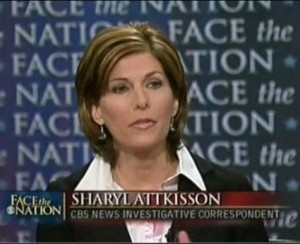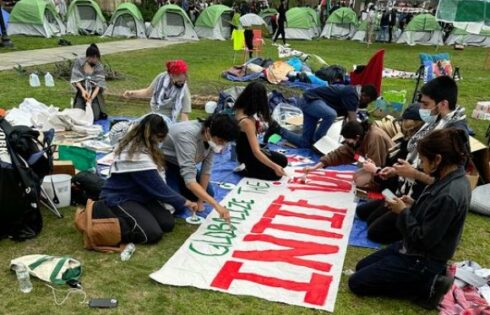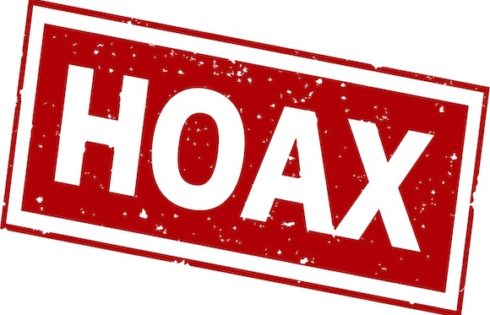
Female students are figuring prominently in two causes that you’d think have little to do with gender politics.
Gun-rights advocates are demanding concealed carry on college campuses so women can defend themselves against rapists, The New York Times reports:
“If you’ve got a person that’s raped because you wouldn’t let them carry a firearm to defend themselves, I think you’re responsible,” State Representative Dennis K. Baxley of Florida said during debate in a House subcommittee last month. The bill passed.
The sponsor of a bill in Nevada, Assemblywoman Michele Fiore, said in a telephone interview: “If these young, hot little girls on campus have a firearm, I wonder how many men will want to assault them. The sexual assaults that are occurring would go down once these sexual predators get a bullet in their head.”
In addition to those in Florida and Nevada, bills that would allow guns on campus have been introduced in Indiana, Montana, Oklahoma, South Carolina, South Dakota, Tennessee, Texas and Wyoming.
There are some interesting divides on the issue – the president of Florida State University, a former Republican legislator and state party chair, opposes guns on campus, for example. And it’s fair to say that guns probably aren’t going to stop ill-advised drunken hookups that later lead to guilty-until-proven-innocent assault investigations.
But what interests me more is the other cause, which could have a more sweeping impact on the public’s right to know.
Writing in Education Week, Student Press Law Center Executive Director Frank LoMonte writes about who’s bearing the brunt of threats to student press freedom:
Disproportionately, because student journalism is increasingly a female-dominated activity, those bearing the impact are young women—women like Kylie Sposato of Pemberton Township, N.J. When Ms. Sposato tried to publish a column decrying lax enforcement of her high school’s anti-smoking policies, her principal vetoed the article, removed a journalism teacher with 20 years of professional newspaper experience, canceled the news-writing class, and ordered the students not to write about being censored.
Other infringements against female journalists include “a student editor’s [nixed] plan to engage teens in the local school board election by hosting an online candidate forum” (the superintendent said “too much could go wrong”) and another punished for an “inappropriate” magazine article interviewing victims of sexual assault.
Sometimes cracking down on student journalists has repercussions beyond the school:
In New Jersey, a [female] student editor is forbidden from publishing a story about multiple employee grievances filed against her district’s superintendent, a fact publicly aired at a school board meeting covered only by high school reporters. The principal tells the editor that “personnel issues” are categorically off-limits for student publications.
Just because we have a ludicrous Supreme Court precedent (Hazelwood) that allows schools to suppress student speech on thin justifications doesn’t mean that “barely legal” is admirable, LoMonte says:
It’s tempting to say that principals and superintendents shouldn’t be second-guessed because they have demanding jobs. But it is always “easier” for government officials to ignore individual rights. It would be “easier” to solve crimes if suspects could be beaten until they confessed. Respecting constitutional values means doing things the hard way because it is also the right way. …
It matters because students are the “embedded journalists” on which the entire community depends for reliable information about schools’ shortcomings. Image-obsessed schools are making meaningful news coverage more difficult than ever for the dwindling ranks of newsroom professionals. In a survey of 190 journalists, released in March by the Education Writers Association, 71 percent said they’d been blocked by media-relations officers from interviewing school employees. …
Year after year, the female student in every high school who has been identified as having the greatest potential as a business leader, the female student most adept at motivating employees, managing a budget, meeting deadlines, and handling customer complaints is told by her administration that she is a troublemaker who should keep her worthless opinions to herself.
Though I can’t speak to whether female students face any higher barriers than males from school leaders, they increasingly represent the face of journalism, by sheer number if not leadership positions (LoMonte has some gripes about this).
And certainly there’s no good reason to excuse this top-down muzzling and its chilling effects for ideological reasons, either.
 Ex-CBS investigative journalist Sharyl Attkinson’s struggles to cover the Obama administration, a media-hostile clique without precedent in the modern presidency, and her criticism of the media being too “shy” to challenge this administration, show that suppression of the truth and self-censorship can come from right or left.
Ex-CBS investigative journalist Sharyl Attkinson’s struggles to cover the Obama administration, a media-hostile clique without precedent in the modern presidency, and her criticism of the media being too “shy” to challenge this administration, show that suppression of the truth and self-censorship can come from right or left.
If there’s a way to get the public interested in what they’d otherwise consider a throwaway cause – the importance of protecting and fostering hard-hitting journalism, which is far less popular than gun rights – then by all means, let’s slap a young female face on a billboard across from the school district HQ that asks a censorious administrator, “Why do you hate women?”
Greg Piper is an assistant editor at The College Fix. (@GregPiper)
Like The College Fix on Facebook / Follow us on Twitter
IMAGE: CBS screenshot
Like The College Fix on Facebook / Follow us on Twitter






Please join the conversation about our stories on Facebook, Twitter, Instagram, Reddit, MeWe, Rumble, Gab, Minds and Gettr.